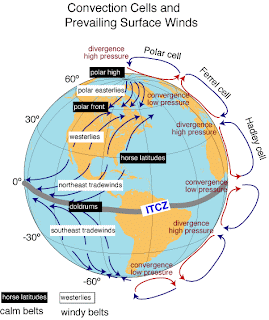Last week I was reading the Tico Times, www.ticotimes.net/weekend/fishing and I found it very interesting to learn that during the months of November and December, the fishing for Marlin is excellent all along the Pacific Coast, from the south of Mexico to the north of Panama. It is expected to see plentiful schools of Dorado, football Tuna, and bigger Tuna moving along with the spinner and bottlenose dolphins. Since Tuna and Dorado (mahi-mahi) are the Marlin’s favorite food, it is expected a great Marlin Season maybe just around the corner.
Todd Staley from the Tico Times explains, “As the rain subsides, the water clarity near shore will begin to improve, and the inshore fishing will return to normal. All the water rushing down from the mountains these past weeks has been carrying tons of silt with it, making inshore fishing a washout for the most part. Some time around the beginning of December, the Papagayo winds will begin to blow from the east, across Lake Nicaragua into the Pacific Ocean. This event lasts about four months. What happens is this wind pushes the surface water offshore and the upwelling water does not have enough oxygen to support sailfish, forcing them to move south. You can catch a sailfish or a marlin any day of the year in Costa Rica, but when the Papagayo wind is blowing, the population is more concentrated in central and southern Costa Rica.”
This fascinating article got my curiosity about the Papagayo wind, a term that I had never heard before, despite the fact that Bill and I have been living in Costa Rica for the last 6 years and we love going fishing; I guess we haven’t been fishing as much as we would like lately.
NASA explains that the weather behind the Papagayo wind is a very simple meteorological mechanism. “During the winter, cold high-pressure weather systems move southward from North America over the Gulf of Mexico. These high-pressure systems create strong pressure gradients between the atmosphere over the Gulf of Mexico and the warmer, moister atmosphere over the Pacific Ocean. Just as a river flows from high elevations to lower elevations, the air in the high-pressure system will flow downhill toward lower pressure, but the Cordillera mountains block the flow of air, channeling it through Chivela Pass in Mexico, the lake district of Nicaragua, and also Gaillard Cut in Panama (which also holds the Panama Canal)."
Every year in the far west of the tropical Pacific Ocean, between 5° N and 17° N, an important event takes place, it is the rising of deep cold water to the surface as a result of the winds pushing from 3 strategic points which are: The Tehuantepec Gulf in Mexico, The Papagayo Gulf in Costa Rica and the Panama Gulf.
season?
 Well, imagine what a sight it must have been a million or so years ago when the volcanoes blasted out of the ocean floor piling rocks and lava for hundreds of miles creating what is now known as Central America.
Well, imagine what a sight it must have been a million or so years ago when the volcanoes blasted out of the ocean floor piling rocks and lava for hundreds of miles creating what is now known as Central America.This also created an underwater maze of formations that many species of sport fish call home and frequently visit to feed during their migratory routes.
The entire western shore of Costa Rica is made up of these spectacular coastline works of nature. They are home to an untold number of varieties of snappers and groupers. The finicky and celebrated "sport fish”, the rooster fish hangs out in this area along with several varieties of jacks, rainbow runners and sharks.
 Offshore the volcanic activity has formed pinnacles that rise hundreds of feet out of the ocean floor, attracting bait fishes that start the "bigger fish eats littler fish" chain of life. Marlin, sails, tuna, and dolphin fish take advantage of the feeding opportunities here. One of the exciting things about Costa Rica is that these popular species can be taken year round.
Offshore the volcanic activity has formed pinnacles that rise hundreds of feet out of the ocean floor, attracting bait fishes that start the "bigger fish eats littler fish" chain of life. Marlin, sails, tuna, and dolphin fish take advantage of the feeding opportunities here. One of the exciting things about Costa Rica is that these popular species can be taken year round.The fish move up and down the coast and one time of year a certain area will be excellent during several months but slow during the others. Generally speaking, from December through April the major bite of migratory species will be in the center of the country and south. The rest of the year the best bite will be to the north. There are exceptions to every rule, of course.
http://www.cunadelangel.com/index.php?option=com_content&view=category&layout=blog&id=39&Itemid=132&lang=en





No comments:
Post a Comment